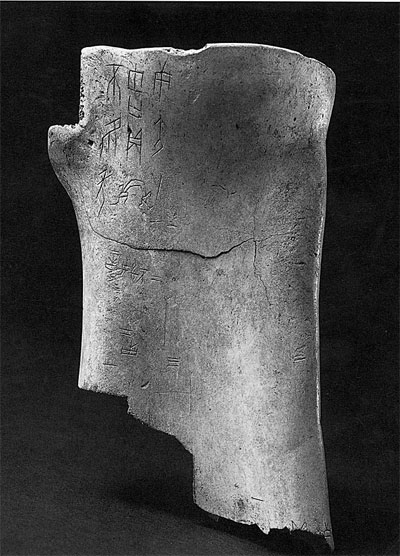|
 |
|
These dragon bones were occasionally unearthed by local farmers, and sold to traditional Chinese medicine practitioners, who often prescribed them whole or crushed for certain diseases.
|
Oracle bones were medicine, not archaeological relics. Thanks to the efforts of two men, these historical relics escaped the fate of being all ground up and digested. Zhao Ruixue reports from Shandong, where the museum is now home to a rich collection.
Wang Yirong was a scholar and high ranking official in the Qing Dynasty (1644-1911), and we would never have known his name if he had not fallen ill one day with malaria in 1899. To make him feel better, he was given a prescription by his doctor that included "dragon bones".
These dragon bones were occasionally unearthed by local farmers, and sold to traditional Chinese medicine practitioners, who often prescribed them whole or crushed for certain diseases. Wang's doctor decided he needed a dose of ground-up "dragon bones".
Wang got curious about these so-called dragon bones. What were they? To find out, he sent a servant out to buy a whole bone, and he found some strange hieroglyphics on them. He looked closely and saw that the scratches resembled the earliest Chinese writing from almost 13 centuries ago.
His discovery shook the academic world of that time and the history of Chinese writing was, well rewritten. The dragon bones were recognized for what they really were - oracle bones used for divination.
But it was thanks to Luo Zhenyu (1866-1940), a famous Chinese antiquities collector, that the Shandong Provincial Museum now has a rich collection of oracle bones on exhibit, with some pieces that are of particular significance to ancient China.
"The oracle bones left by Luo Zhenyu contain very important historical information for the study of etymology," says Yu Qiuwei, an archeologist at the Shandong Provincial Museum.
Two significant pieces in Luo's collection are the Ma Divination Bone (鎷卜骨) and the Rainbow Divination Bone (虹不韦年卜骨), both of which are from the later Shang Dynasty, from 16th century to 11th century BC.
The first bears a Chinese word "鎷" with the word for gold as a prefix. And since "gold" was also used as a general term to denote metals, it was interpreted as proof that bronzes were already popular among high-ranking officials of that period.
The Rainbow Divination Bone bears the Chinese characters that literally mean "the year that rainbows appear", which does not augur well for agriculture, according to Xu Bo, another archeologist at the museum.
"The information on the Rainbow Divination Bone is China's earliest record of rainbows," he says.
|